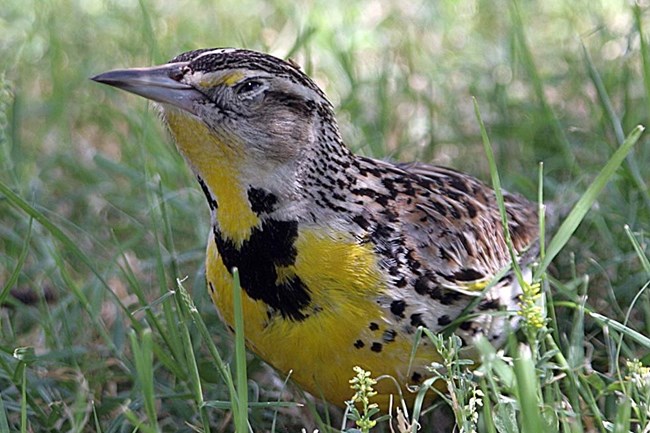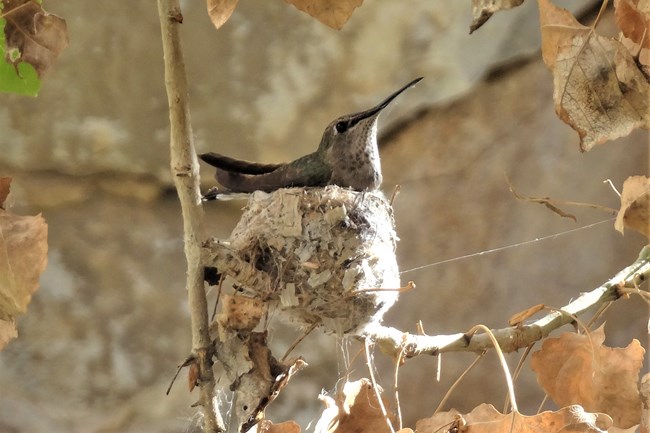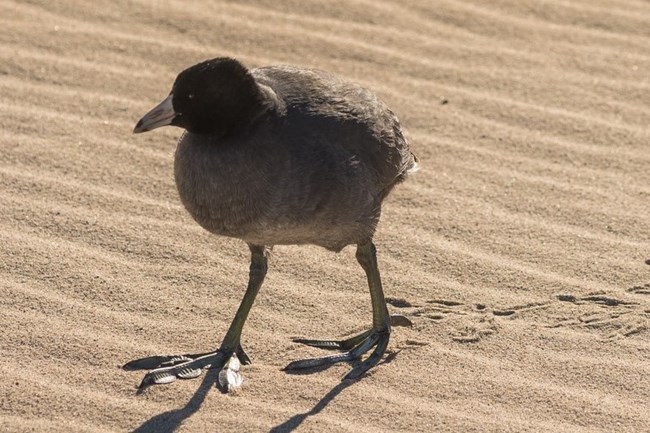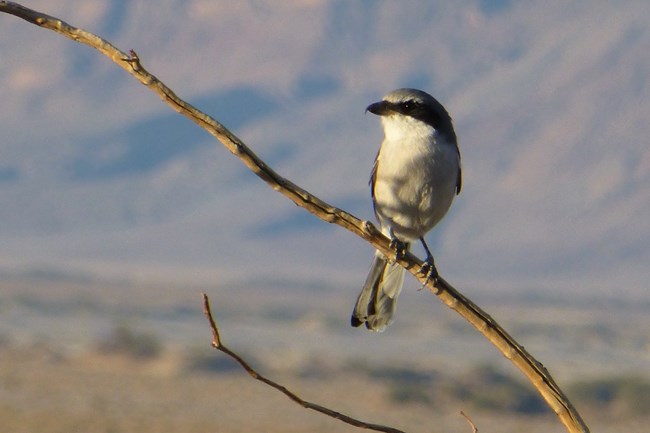
|
|
As one travels from the low valley desert, up the canyons, through the pinyon-juniper woodlands and onto the high boreal peaks, climate and vegetation changes are obvious. This wide diversity of habitat leads to a subsequent diversity in the bird species found on the bird list. Birdwatching Seasons
NPS / Bob Greenburg Spring MigrationFor a few weeks in the spring and again in the fall, hundreds of species pass through the desert areas. The first of the spring migrants can be detected as early as the first of March. By mid-March to early April the northbound movement is very much in evidence. The first wave of warblers reaches the valley about mid-April. Arriving at the same time are dozens of other species that are in full migration. The northbound movement reaches its peak from late April to early May. 
NestingNesting occurs from mid-February, during warm springs, through June and July in the high elevations. May through June is the most productive nesting period. Seeing nesting birds is a wonderful sight, but please remember that nesting birds are protected by the Migratory Bird Act of 1918, and disturbing them is illegal. 
NPS/K. Moses Fall MigrationThere is definite evidence that the fall migration is underway by early August. Southbound movements are at a peak about the last of September. However, it is sometimes difficult to differentiate between northbound and southbound movements. Late spring migrants may still be moving north as early fall migrants begin their southward journeys. There is also the post-nesting summering visitors that may be mistaken for early southbound migrants. 
WinterNovember through March is probably the poorest season for birding; a few permanent residents remain, as well as occasional Sierran visitors. However, a number of species can be observed by exploring a variety of habitats. The majority of the park's avifauna can be found at the low mountain springs and desert oases. Furnace Creek Ranch, with its diversity of habitats is definitely a hot spot. Springs that occur at up to about 4,000 feet elevation are also popular wintering habitats. Where to look for birdsWhen birders visit Death Valley, traveling to a variety of representative habitats will prove to be the most productive. Visiting the following areas provides an overview of the diversity of Death Valley habitat and avian species:
|
Last updated: September 8, 2022
